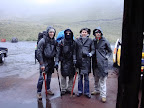So... i left you after i got sick in "Cholera" and recovered in the north. Before i continue with the story, maybe its a good chance for a short background about Mexico as a country (i made a little research out of interest, so i might as well share...).
Mexico general
The symbol of in the center of the flag is taken from Aztec mythology (next to come).
Mexico is a constitutional federation with 31 states and the Federal district containing the capital: Mexico city. You have all probably heard the states names: Tobasco, Chihuahua, Sonora and more, in a different conotation.
Topography and weather
Most of the Mexican territories are located at high altitudes ~2000+ m with mostly dry and moderate weather, while the south area of Yucatan and the east cost area of the golf of Mexico at low altitudes are hot and humid - tropical climate.
Population: ~ 110 Million.
Ethnicity
- Mestizos 60% (Mixed origin: Spanish & indigenous).
- Indigenous 30% (mostly poor and oppressed).
- Whites: 9% (mostly descendants of first Spanish settlers and are the ruling Elite).
- Other: 1%.
This division goes hand by hand with the identity problem that i can see all over Mexico (i will relate to that in the end of my travels here).
Language
National language is Spanish, at least 50 other indigenous languages are reserved from old times, such as the Aztec Nahuatl.
Religion
Roman Catholic 76.5%
Unspecified 13.8%
Protestant 6.3%
Currency
Mexican Peso, 1$ US = 13 Pesos (with the current crisis the value is dropping constantly.
The Mexican currency is strongly linked with the Dollar and for example the treasury reserves are Dollars and not solid (gold bars). Some of my friends are actually thinking of buying gold bars as insurance of future dollar collapse.
Economics
- Mexico is the 12th largest economy in the world with a free market
economy and a GDP (תוצר לאומי גולמי ,gross domestic product) of $1.35
trillion (2007) with Mexico city producing more than 20%.
- Natural resources: petroleum, silver, copper, gold, lead, zinc,
natural gas, timber. Mexican economy is highly depndent on large oil natural
resources. PEMEX (petroleum Mexico - a state monopoly): the largest
company in Latin America (9th in the world), produces 1/6 of the worlds oil
(more than Kuwait for example).
- Agriculture: Throughout the last decades Mexican economy is
transforming from an agricultural economy to an industrial economy and today
agriculture part in GDP is less than 4%.
Main crops are surprisingly not corn put tropical friuts and vegables.
- Trade: Most of Mexican export goes to Us and Canada with NAFTA (North
American free trade agreement) with main exported comodities: oil and oil products, silver, fruits, vegetables, coffee, cotton.
- Main problems: poverty and underemployment and there are severe
economic gaps in the population. Income per capita is one-fourth that of the
US. An electrical engineer is sometimes offered 400 dollars a month, while in
USA the lowest wage is 4,000 dollars.
Army
Like in Israel, at 18 years of age there is a compulsory military service;
however 1 year for guys and voluntary for women relative to Israel with 3 for guys and 2 for women. Volentary enlistment is for a period of 16 years.
- The army counts about 2% of the population (~1 million men, ~1 million women).
- Military budget is ~0.5% of GDP relative to Israel with ~10%.
Mexico has a war as well = drug truffiking
Since Mexico serves as a gate to the US.
Cocain that comes from Columbia and heroin and Marijuana that are grown in many places (including the north of Mexico - seen it with my own eyes).
The US supports the Mexican army with funding and arms and it is very common to see Mexicans use Hammers and M16s. Throughout the entire Baja peninsula there are army roadblocks and searches for drugs.
The army is also considered as the more reliable force in the country relative to the police that is considered corrupted by all of the people i meet. The best example is the killing of 14 people in Creel when i was there. Apparently the 32 policemen that were there left town 3 hours before the incident. The army (not other police unit) came to put order and arrest the policemen.
History
IT´s impossible to do it so short, but i relate to some later.
Israel - Mexico connections
(I´m sure that there are more, but this is what i could think of)
Mutual: free trade agreement
Mexico to Israel
1. Our identifying icon: The Sabar is actually the Nopal cactus from Mexico.
2. Mexico is the mother of the corn. We inherited this as well as many other crops that have become part of our life: Coco beans (used by the Aztecs), Potatos, Chiles, Guayaba, Avocado (pronounced as aguacate).
Israel to Mexico
1. Galil rifles are carried by many police man here.
2. Agriculture: Israeli advisers and seeds.
3. Most of the Mexicans i have met are crazy of electronic music and listen to many Israel
famous DJs (that i actually didn´t know).
After 2 weeks i lost for an illness, i just felt i need to go on big time and decided to go to Puerto Vallarta to catch some sun and recover more. I was welcomed warmly and hosted by the family: sister and nefew (Chacha and Christina) of Ramon my friend from the north.
But to be honest Vallarta dissapointed me with too many hotels, tourists, rich houses on the beach...nothing really real.
So after hearing a lot of great things i decided to move on. I got to Guadalajara center and decided to settle down in a hostel. As i was walking through the doorway, a few Israeli guys were sitting playing cards and smoking Nargila. I barely had the chance to say anything and heard, "great, another Israeli, Now we have a komuna" and got the briefing for the city: Nothing to do there besides go to Tequila to drink, the place to eat is the close 8 peso taco stand and you have to order a Gringa and eat it only with the green sauce. Not sure why, but i actually went and tried it and when i said it wasn't so great, i got a look and a loud voice, "well, what do you expect, it's Tortias". Well...this komuna was the opposite to my traveling in every way, so i tried to avoid it as much as i could.
To be honest, in the first days i was kind of disappointed and bored: the hostel was pretty dead, Guadalajara has a beautiful historical center, but it's pretty small and besides that it is mainly a big city and pretty modern in many ways.
Out of a little dispair i and a feeling that I'm missing something i remembered that I'm a member of the Couch surfing community (people host travelers in their homes all over the world) which i actually never used, i decided to get in touch with some locals to get some help.
I didn't even had the chance to blink, and so fast met so many great people that really made the difference for me. A big meeting for drinking of 15 people: international and Mexican, next day i was taken to a restaurant with the Guinness record for fast service (as you order, a little sign language between the waiters and you already see another waiter carry the dishes to you) and traditional Mexican Mariachis (big musical groups of mainly string instruments and singing, origionated in the state of Jalisco).
Tequila
Tequila is a little town, about an hour drive from Guadalajara, famous for it's local drink carries the same name. The real Tequila is made of 100% of Blue Agave cactus and doesn't contain a worm. What we were accustomed to call Tequila is actually Mescal which is a modification made by the Spaniards and is made with other cactuses types as well and the famous worm.
It takes a long time to make tequila becuase agave is ready to harvest only when it is 7-10 years.
Tequila has become a pretty touristic town, but it is still a nice experience, with so many factories in town - We (my hostel buddies and i) were lucky to bump into one while walking in the street and get the non touristic version for free.
But the best thing of all was watching the view of green fields, mixed with large blue fields of Agave - breathtaking.
Orozco and the murlists
Usually in my life, i didn't find my connection to art, most of the things just looked meaningless and didn't move me in any way. This time was extremely different.
Large Murals (ציורי קיר) painted by Jose Clemente Orozco (who did it with one leg and one eye) tied Art, history, ideology, critisicm, symbolism and optical illusions to one entity. And doing that with one leg and one eye. Starting with the Spanish conquest with motives of Mechanized cold metalic Spaniards and double headed horses (thought by the Indians to be men eaters), the church as the apressor and killer of the indians to modern days with cold black corupted demagog ploticians.
This was the first time in many to see what is in my mind is now very "Mexican" the murals in every official building, every step you take. I would sure want to see that happen in my country as well. There is no better way to memorate and convey history.
Luch libre
The Mexican wrestling, more or less like American WWF, only with masks on the heads and less fit fighters. It seems like as the more they hit their opponent weak and gentle, the harder he falls and pretend to be suffering. Just a big show, but the crowd is crazy about it.
Whenever i make fun of it in front of Mexicans they give me this look as if i offended them.
State of Michoacan: City of Morelia (state capital)
Europe with Lemon chile and salt.
For me this city with many others in the center of Mexico (historical areas of Guadalajara and Mexico city and many more) combined with the Mexican temperament is Europe but with a lot of salt lemon and chile (as found in every food here, even fruid salads).
What´s so special about it is the large historical center with many streets with mostly wealthy Spanish arcitecture buildings made from a pink sand stone typical to the area. Many art galleries, gardens and statues in the streets, every house entrance that doesn´t look inviting hides behind an amazing court or garden. I just spent my mprnings there walking arround and getting lost.
The ancient library
From one of the curches: chirstianity "salvages" the "primitive" indians.
I actually didn´t know about this city much until my friend Daniel from Guadalajara told me i have to come. He with his family invited me to stay at their house and took me to great ride in the area. We became really great friends and had the chance and luck to meet again in two other occasions for celebration and mixed out friends pretty well and now all are in touch.
I really have no words to thank him. He had done so much for me, but more than all was a good friend ! Next time in Israel.
Mexico city
The first thing that I can say about it is that it is HUGE !!!
How huge is it ???
- It is the second most populated metropolis in the world with more than
20 Million people.(Tokyo is the first with 32 Million). You can check out
this comparison (number, area and density): http://en.wikipedia.org/wiki/List_of_metropolitan_areas_by_population - It is so huge that when you go up a tall building, all you can see in all
directions to the horizon is city. - The longest avenue (Insurgentes) is around 30km.
- Just imagine for a minute that the entire area between Tel-Aviv and
Jerusalem was completely covered with buildings. - Taxi drivers often don't know where to take you.
Some interesting things:
1. The altitude is around 2200m (no so far than our highest: mount
Hermon ~2800).
2. The city is built on a lake and was formerly the Aztec people capital:
Tenochtitlan (more to come), and even back then (500 years ago) was a
huge metropolis with up to 1 Million people.
The center of town: a huge plaza and central cathedral are all built on the ruins of Tenochtitlan center. I know the Aztec were not really mercyfull people, but watching the grand cathedral with so much gold (probably Aztec) over what used to be the largest Aztec pyramid (was accidently discovered not so long ago) just makes me feel anger !


3. Due to the unstable nature of the land and a few earthquakes in the last
century, every 2ND building looks twisted or leaning in a non natural way.

4. The main university of the city: UNAM is a huge complex (a city of it´s own) that
holds more than a 1/4 Million students, that study for free.
5. The Metro (subway) was a great surprise i think that a lot better than new-York.
Looks relatively new, clean, police in every corner (I was never afraid for a second), there is a clever symbol system that every little kid can understand and it is sponsored by the government and costs nothing: 2 pesos (around half a Shekel). Even more nice, a lot of the underground spaces are used as small museums for exhibitions of art, photography, history and science.
6. We always complain in Israel about the increasing class differences, but
you can't even compare the gaps that you see here. From extremely rich neighbourhoods (among them Polanco with the Jewish community) to groups of poor people, barely dressed, sometimes ill sleeping on the sidewalks in the cold nights.
7. It is a highly cultural city and said to have the highest numbers of museums in the world. A lot of high quality cultural shows and events were free and funded by the government. In many places that i went, many sculptures decorated the streets, commemorating the Mexican history and heroes.
Independence day
I rushed towards the city to take part of the great celebration of the independence day.
Now i can say that this was the right decision over staying in Morelia, because during the celebrations, 2 hand grandes were thrown into the crowd resulting with many casualties.
Mexican nationality and patriotism is all over very obvious with huge flags in every city center, statues, murals and street names. But in this celebration everything gets to extreme.
Everything is colored with green red and white, and everybody wear the symbols of the Mexican history and revolution heroes (Our Mostages represent the revolutionaries panco villa and emilio zapata) and of course like in every Mexican celebration everybody get drunk !
It all started with father miguel hidalgo, a priest with radial ideas againts Spanish opression.
At midnight on September 16, 1810 he rang the bells of the city of Dolores and made a speech known as Grito de Dolores ("Cry of Dolores"), in which he demanded independence and called on his people to expel all foreign invaders and rulers out of Mexico (only a year later his head was hanged over a Spanish fortrees in Guanajuato - next time).
This was the start of 11 years of fighting againts the Spaniards until the acceptance of Mexican independence by Spain in 1821.
These days, in every independence day the grito is reannounced with the shout: "Viva Mexico, Viva Mexico, Viva Mexico" and in center of Mexico city: The Zocalo (2nd largest square in the world after the red square - Moscow) is carried by the president himself.
What was shocking to me is to see 2 heads for Mexico. Apparently in the last elections the current president stole the elections with fraud - this is what i´m told by all i meet.
So in the symbolic center of Mexico, before the president Greeting the Head of the oposition (who was suppose to win the elections) gave his greeting on the other side of the square.
When it ended the square was literaly evacuated with none waiting for the greeting of the president. Eventually it got filled again and the president gave his grito with magnifiscent fire works. This really symbolized for me how divided are the Mexican people.
Living in the center
I was warmly welcomed and hosted by my friends Michael (Germany) and Rodolfo (Mexico), my travel bodies from the north and became great friends with May-Lin (France) and Corine (Holland) the other flat mates that accepted me as family.
The house is just in front the police museum and i was welcomed with huge sign about the new show about serial killers. And from some reason in the entire area in every street corner for 24 hours there was a police officer with a rifle.

The house is also very close to the historical center, but very suprisingly this part is actually a poor part of the city with poorly sustaining Mexicans living arround us.
All of the services are working very different than i know. Every morning guys walk on the corridors of the building and shout "water" or "gas" for canciters. There is no place for trash. It is collected once a day with a truck that comes at work hours, so the solution is breaking the law, sneak out at night and leave your trash in the street to be collected.
I can really characterize this period as a very social one, meeting tons of new people (mainly Mexicans) many house parties, joined dinners, rock concerts and adventures,
but also a lot of time of self learning about Mexican history and culture.

Fighting cockrouches
Xochimilco
The south part of Mexico city, where water canals, much like in ancient Tenochtitlan still exist.
Sushi night
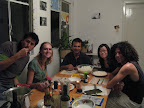
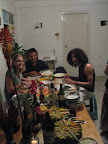
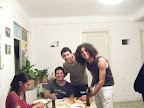
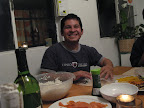
Rock concerts: Cafe Tauba, Mano choa
Not really my type of music, but it's amazing to see the crowd: Almost every second hand is holiding a shiny cellular and filming the concert, while every other second hand holds an improvized periscope from cardboard (for the people who are not tall enough).
My dear friend Aidee who i met in the concert
The holidays and the Jewish community
With a stong crave for the holidays i tried to find a place for Rosh Hashana. Apparently, not such an easy task. It turns out that the Jewish communities here are very closed and you need to have some kind of membership and contribution in order to come to a sinagogue.
Finally in one of the places i did managed to get, the conversation barely started and i was asked for my age. The answer immidiately was great i have something for you, she is very pretty and got a phone number while i'm asking myself if i accidently called a hot-line or something. Anyway, i talked to her and got the filling like i got fixed with a bitter old bachlor and
chose my other option: Beit Habad.
I actually really tried to avoid it at first and find a less religous, more relaxed atmosphere (also due to the missionary nature i usually encountered) but i must say it was really nice and warm and not too much pressure. It was nice to celebrate the holidays among a bunch of local Jewish people and other Israeli travelers and speak some hebrew, and the best - eat Tehina and grapes from Israel.
The second day i chose to celebrate alone and prepared the food. The next thing i knew, i was blesing and teaching the holiday customs to my friends (Mexico, Japan and France) which were entrigged and loved it.
Climbing Ixtaccihuatl (The white woman) volcano
No doubt one of the nicest nature experiences of my life so far !
This is the 3rd highest mountain in Mexico (5200m, highest is 5600m).
A beatiful Aztec legend about the mountain (shaped like a lying woman) and it's active neighbour Popocatépetl.
Roolfo Michael, jorje and i decided to make it. Our goal was to reach the last shelter (a small cabin) before the summit, stay there overnight and reach to the summit with first light. We headed our way in the afternoon with some concern about the late hour and much rain. From the first moment the views really struck me. Everything was so different than what i have seen so far, constant myst in the air, everything is wet, many bushes with purple flowers (a plant from the family of the Turmus) and a huge layer of clouds covers everything beneath us.
After a steep 2 hours climb, it was starting to get dark and in a period of only 2 minutes, the pleasant inocent clouds flowed up and covered everything. With low visibility it was really hard to track the trail and we decided not to take any risk and park on the nearest mountain saddle.
Somehow we squizzed in 4 people in a pretty small tent and waited for first light, sleeping to the sounds of thunders which later on i understood were the sounds of the neighboring active volcano.
After getting warned from a night without sleep becuase of the lack of Oxygen and of course the cold, i can say i slept perfectly well with my underwear in my sleeping bag and learned again about the importance of good gear, while Rodolfo and Michael were well dressed and still freezing and barely slept.
At 4 Oclcok we woke up in order to get higher and try to catch the sunrise. As i was folding my backpack, i tried to stop a bottle of water that was rolling into an extremely deep canyon, while doing that my sleeping bag decided to compete with the bottle and eventually i lost them both.I was so annoyed about my lost sleeping bag among all of the stuff i have lost so far, some stolen (Camera, Leaderman, Petzel...) God damn !!! but had to go on...
Later on my camera (3 days old) got broken (maybe the pressure or temperature) and made me even more determined to salvage my sleping bag. On the way back i went down the steep hill, trying to anticipate the rout of falling of my sleeping bag, and suprisingly after 300m down i found it !!!
After a long and tedious climb we got what we were looking for. The best sunset in my life!
With a sea of clouds covering everything and only other volcanos peaks penertrae it seeming like small islands and a strip of bright orange light separates earth and sky throughout the entire horizon. Slowly slowly the sun rose up with the colors keep changing.
The heavy clouds changing position all day created some amazing light effects that really made me feel like i wa walking on a different planet. The sunrise made a setting of Mars with orange rocks and light.
Long steep climb, with Michael getting ill and suffering (probably height sickness) we got to the cabin. Reluctantly we left Michael to wait for us, but everything was known before, either one of us could be in his place. Last long climb using ice axes and spikes for the shoes and Rodolfo and I made it to the top (Jorje got tired in the middle).
A great feeling of achivement that was followed with bad weather and visibility that prvented us the full enjoyment: a 360 degrees view with Mexico city.
At this height (5100m) you can really feel the effects of low oxygen (At 5500m there is half of the oxygen of 0m). Every breath is a little effort and drinking is very hard. Every sip replaces a precious breath. I think this with the cold water made me break my water dicipline and as we were going down i started to feel bad.
The 1968 demonstration
Just a few days before the olympic games that were help in Mexico 1968, after 9 weeks of student strikes, and after the army with thew prders of the presidents conqured the university, a big student demonstration that was ment to use public attension called for the end of corruption and reforms in the government.
The president in response ordered the army to forcly decay the demonstrations, and in night fall soldiers and tanks shot into the crowd indescreminetly. As if this wasn't enough they also cleared the entire surrounding of appartment buildings, killing from house to house.
40 years laer, a big demonstraion for remembrance of the event and with some same demands was held. I went to get some impression how a demonstraion in the Zocalo - the second largest square in a city (after the red square) looks like.
As i was getting close, i saw for the first time in my life an army of policemen in action.
Long columns of polic armored cars parked to the sides of the streets.
Many plattons than i can count were marching and running in the streets with intimidating sounds. many of them were formed in a huge long human chain along the streets.
I tried as much as i could to avoid them, to flank and to chose a rout which was less dominated.
As i got to the square, a massive body of people were chearing to the calls of the leaders, but overwhole it was civil and quite and ave me the feeling that nothing is not going really to be changed with this.
As a great obsurd for me, great pictures of the heroes of socialism and communism were raised by leftist demonstrators and i was just thinking how some of the biggest murderers in the world are the starts of this demonstration againts killing.
Towards the end things got a litle hotter when the police tried to get the hands on some of the trouble makers. Suddenly it looked like i´m in a bad dream in Soviet Russia, as 50 undercover civilian dressed police man were rushing to the same man (i actually saw the same thing happens gain). It looked like at least a quarter of the crowd is planted by he police.
Later on clashes increase as he police took one of he demonstratoes and formed a blockade of shiels arround one of the buildings entrances. The students respponded with throwing things and trying to break in. The police started to use some shock gramades, and then we knew, IT IS TIME TO GO.
But overwhole this was a singular event and the demonstraion was rtelativly quite and was dissipated rapidly.
History
I left this to the end cause this is going to be quite a long survey. There were many ancient cultures in Meso-america, but i chose to focus mainly on the Aztec culture for now becuase it is the mostly documented, it is the direct base of Mexico and the story of the Spanish conquest is extremely fascinating to me. Furthermore many aspects of the culture are similar with other cultures in the area.
The start
The Aztecs originallywere a small tribe located in the north of Mexico. According to Aztec mythology they were ordered by their god to go on a journey south towards a "promised land", and acquire the name Mexica (pronounced Me-shi-ka, the origin of the name Mexico). After 200 years of migration to the valley of Mexico, they were shown a vision of an eagle standing on Nopal (cactus, "sabres") on a muddy island in the middle of the texcoco lake and holding a serpent (snake). This marked the place of later to come Tenochtitlan or what is today Mexico city.
Tenochtitlan - The capital
Truly amazing, this entire city was an island city, built in the middle of the lake and in the peak of the empire contained around 200,000 people and estimated up to 1 Million people in the metropolis area (huge in ancient scale).
“And when we saw all those towns and villages built in the water, and other great towns on dry land, and that straight and level causeway leading to Mexico, we were astounded. These great towns . . . and buildings rising from the water, all made of stone, seemed like an enchanted vision. . . . Indeed some of our soldiers asked whether it was not all a dream . . . It was all so wonderful that I do not know how to describe this first glimpse of things never heard of, seen, or dreamed of before.” [Bernal Díaz del Castillo, The Conquest of New Spain]
Much like a modern city (at the time more advanced than any city in Europe) it had various facilities and services:
- The center contained colossal stone pyramids that were the center of religious and political life
and believed to be the center of the world as well.
- Three wide avenues crossed the city and connected it to land by bridges.
- A system of 2 aqueducts, more than 4 km long each, delivered fresh water to the city through the lake.
- the city was divided to districts and blocks that were crossed by streets and water canals with wooden bridges.
- Around 1000 people collected trash with boats on a daily basis with some of the waist recycled and used as fertilizer (Deshen).
- A huge marketplace contained up to 30,000 people every day.
Commodities from all kinds were replaced with coco beans, cotton cloths, copper tomahawk axes and small gold statues as the currency.

Every 52 years (A completion of a life cycle by Aztec mythology), the city was rebuilt
and improved (it was also necessary due to the sinking of the buildings). The main pyramid (Templo mayor) were you can visit the remains today (the rest is buried under the city) has 7 layers of building.
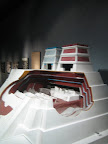

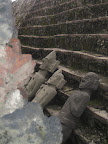
Theology and rituals (human sacrifice)
We mainly know the Aztecs for their bad reputation of rituals of human sacrifice and usually think them to be barbarians.
But actually they were not alone. Throughout Mesoamerica (Mexico and central America) this was the way. The theology involved the concept that the gods gave things to human beings only if they were nourished by human beings. The Maya priests for example would nourish the gods by drawing their own blood, piercing their tongues, ears and genitals.
The Aztecs practiced all of these sacrifices as well, but got extremely famous for this for the unprecedented scale (thousands of captives at single events) and also for perfecting it to extreme brutality: They developed the notion that the gods are best nourished by the living hearts of sacrificed captives and the braver the captive, the more nourishing the sacrifice; people's hearts were literally pulled out while they were still alive.
This demand for human sacrifices forced the Aztec society to be highly militaristic and conduct military campaigns solely for capture live people.

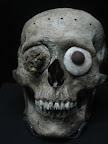
The Wall of skulls from the Aztec temple
In a more personal sense, yes in my standards and modern standards, it is barbarian and unthinkable. But to me the Spaniards who butchered these Indians and others in extreme brutality, in so many occasions are not different.
Furthermore i see it throughout the entire world's history. People are very creative in finding reasons for killing each other: wealth, religion, ideology, ethnicity, territory... you name it (The crusades, the Spaniards in America, the Holocaust and the list is endless).
So if i try to separate and put it aside for a minute, i discover that the Aztecs were a highly developed civilization in many fields, some even in modern perspective.
The Aztec society - Social classes
The Aztec society was feudal in essence with a basic division for nobles and commoners.
Commoners contained farmers, warriors, craftsmen, artists and merchants (there was a sub division as well) and they were obligated for tribute payment and military service for their novel. They could have possessions, however showing off wealth in public (like novels) could have been punished by death, so there was clear separation. Though rare, a commoner could become a novel for example through bravery in battle.
Finally a man could become a slave due to depth, crime or as a war captive. Different from other civilizations (European) slaves could have possessions and eventually buy their freedom.

Law
Mexica laws were simple and harsh and mostly supported by the population. Almost every crime, from adultery to stealing, was punished by death and other offenses usually involved severe corporal punishment or mutilation (Lying was loss of one's lips).
Education
The Mexica were one of the first people in the world to have mandatory education for nearly all children, regardless of gender, rank, or station. Two kinds of schools existed: one for the commoners teaching religion, combat, history and crafts and one for the training for high official and religious ranks. The teaching was a spartan in nature and involved cold baths in the morning, hard work, physical punishment, bleeding with maguey thorns and endurance tests – with the purpose of forming a stoical people.
Women that were considered lower than men were thought religion, house work, crafts and child raising, but not literacy (reading and writing).
Transportation
A long system of roads for walking (no carrier animals were present) connected the concurred cities with taverns along the way. The roads were kept monitored for maintenance and safety, such that it was safe for a woman to travel alone (the Spaniards were amazed by this cause in Europe it was not possible).
Agriculture
As amazing as the city built on a lake, the same with agriculture. Rectangle artificial islands were created in shallow area of the lake (Arugot) with water canals system connecting them. Dikes (barriers for water) were built through the lake to protect this areas with fresh water from getting contaminated with salty flud water of the eastern lake. Most of the city's food was provided using this areas and it is estimated that the production could reach up to 7 crops a year (i can´t think of anything like this today). Even today in the south of Mexico city (Xochimilco) you can rent a boat and experience it with your own eyes.
The diet was mainly vegetarian and based on crops of corn, beans, pumpkin, tomatoes, chilies
and as well fishing from the lake. Many of the dishes from that time are still here today.
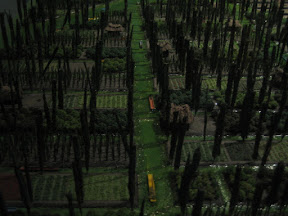
Literacy
Unlike most of civilizations in meso-America who didn't have a writting system, the Aztec were more advanced and had a basic system that was not developed to be read or spoken but mainly used to represent gods, peoples, places, and dates.
Still this turned out to be an important source for learning about their lifes and other civilizations as documented by the Aztecs.
The ball game
I guess the earlies ball game i know...
This game was played by warriors in a ceremonial occasions and there are ball courts found almost in every culture with 2 competing groups who have to use the hips in order to insert the ball into rings.
A links for videos with reconstruction:
http://www.youtube.com/watch?v=xnFjsbn36QI
http://www.youtube.com/watch?v=Zul8w1RYypk
Art
Its only enough to look at the many creations of ceramics, masks, sculptures and paintings to appreciate to high capability of the Aztecs craftsman, working without any sort of Metal for their aid, but their equivalent mineral obsidian (black glass).
Much like the Samurais in Japan, the Aztec warriors in times of peace dedicatethemselves to Poetry.
There are many other interesting aspects, but i guess it´s already too much...
The fall of the empire - Spanish conquest
First it is important to say that it is extremely hard to know what and how things happened exactly. The Spanish version and the Aztec version are far from the truth and differ so much from each other. I read a lot and chose the one that looks the most credible to me, but i might be wrong.
It all started when Cortes land on the coast of in Mexico in the area of Yucatan - Maya territory (south west of Tenochtitlan) with a small force of around 600 men. While progressing into the main land he started learning about the Mexicas empire and glorious Tenochtitlan and it´s treasures.
On the other side, Moctezuma the Mexica emperor was already aware of several European encounters on the golf of Mexico in the preceding years. He was constantly updated of the Spanish progress and send emissaries with gifts to meet them and gather information, while they were tasting Europe for the first time: the wooden cross, steel armors, horses, wine and a cannon in action and also the impossible smell of the Spaniards (who was the total opposite of the indians who used to take a shour once a day).
Little by little Cortes began to make alliances (deliberately) either by diplomacy or by conqur, some known enemies of the Mexicas. Upon arriving into Cholula - the second largest Mexica city (and the last barrier on the way to Tenochtitlan), Cortes and his men commited a massacar of thousands of nobles that came to welcome him at the center plaza and burned part of the city. The reasons are unclear and were probably either in order to set panic at Tenochtitlan or making an example fearing of native treatory (probably supported by Moctezuma).
Now, there is a common theory (at least what we all learned at school) that what brought the fall of the empire was the submission of the Mexicas that mistakenly recognized the Spaniards as their gods and Cortes as Quetzalcoatl (an exciled got that was suppose to return). This seems be contradicted by the massacer in Cholula that was an extremely important religous center for the same god. I tend to think that by now, if not before, the Mexicas knew the true intensions of the Spaniards and that they were not their gods.
Futhermore, The evidences for the image of courtes as a god, started apearing in writtings only 100 years after the fall of Tenochtitlan and it is suggested that the Mexicas wished to give an excuse for the great fall.
Moctezuma, deeply troubled by the Spaniards progress, the lost of Cholula, the many Mexica enemies that joined the Spaniards tried to intercept Cortes forces and set ambushes on the road towards Tenochtitlan. Cortes however, probably smelling the trap, chose an unexpected difficult passage in the snowy mountains entered unharmed to valley of Tenochtitlan.
Many quates supposibly describe Moctezuma and courtes meeting on the outskirts of Tenochtitlan, but on the other hand it is claimed that it is highly unlikely since Moctezuma tried hard to seperate himslef from his people or be seeing in public. Happened or not Moctezuma Eventually chose to let the wolves into his house and welcome them as gusts in his palace.
Why ??? Unknown !!!
There are a 2 main versions:
1. Spaniards as gods theory, And there are many quates that supposibly support that:
"You have come to sit on your throne."
Again i tend to cancel that !
If Cholula wasn´t enough Spaniards are reported to wear full battle gear and having thousands of other allied Indian warriors with them in the gates of Tenochtitlan (appear to me like clear intensions).
In short, I don't think Moctezuma was a full !
2. Moctezuma was fully aware of the situation and wished to learn the enemy and it's weaknesses. Furthermore, letting such a small force into the city, surrounded by high numbers of Mexicas, in a dense urban center, crossed by many cannals of water could be an advantage, and will make them depndent on him.
(3) Maybe he was affraid, had a weak charector, hoped to make some kind of a deal and save himself as some describe him, but on the other hand it seemed from the Spaniards descriptions that they fell in love with their captive and he was quite an impressive man. So who knows...
The Spaniards actually lived and enjoyed the luxury life of their host for a few months.
The some of the high novels (including Moctezuma´s brother - cuitlahuac) were not happy about the army presence of the Spaniards in Tenochtitlan and urged Moctezuma to have them leave.
While this was not done, actions againts the Spaniards began to take place. Cortes got the word about his forces in the port of Vera-cruz were attacked and fearing of his safety arrested Moctezuma in his own palace (high jack terrorists tactics). Moctezuma fearing for his life, declaired to his people that he is going to spend some time with the Spaniards on his own will, buying more time for the spaniards.
Surprisingly, this entire adventure of Cortez was actually againts orders and at some point had to leave the palace to confront (fight) the Spaniards who came to arrest him. In the absence of cortez the spaniards remaining commited the The Massacre in the Main Temple while the Mexicas were celebrating an important holiday. The reason is not clear: by the Mexica version it was the greed of the Spaniards watching the priests dressed with gold. According to the Spaniards there are many versions: helping Moctezuma stopping an uprise, stopping an attack againts them, stopping human sacrifice. Or as suggested taking advantage of the Mexica weakness: most of the army elite and best warriors were in the temple un-armed and the spaniards could easily block the entrances and butcher them all.
Once the Mexica understood what is going on, they counter attacked and put a siege on the Spaniards in Moctezuma palace. With Cortez returning triumph from his battle, bringing 1300 more Spaniards, promissing them the gold of Tenochtitlan, he realize to severity of the situation.
He made Moctezuma talk to his people while he got responded with a shower of stones.
Cortez underestimated the Aztec leadershop structure which was obligated to replace the high ruler in times if he can't perform, and chose his brother cuitlahuac. Moctezuma was eventually killed by the throwed stones - Spanish version, or either by courtes once he had no value anymore (2 more novels were found with him).
There was no other choice for the Spaniards but to flee the city. Since all of the bridges were removed, they had to build and carry a woden raft, but as they were detected they got trapped on a narrow passage through water and total chaos and panic broke. Cortez managed to barely flee with his cavalry, however the Spanish infantry was destroyed, while many sinking in the lake with the heavy loads of gold they carried.
Eventually 2 years later, Cortez gathered more forces and allies and progressivly cut into Mexica terittory, isolating Tenochtitlan. He than laid a siege on the city, this time with 75,000 men, denying food and water while the inhabitants were already fighting the silent killers that were left by the Spaniards - Smallpox (Abaabuot), which also took their leader cuitlahuac (Moctezuma brother).
Eventually bodies were piling in the streets of Tenochtitlan and after intense fighting, from house to house, the city had fallen and the last Mexica leader, Cuauhtemoc, was captured and tortured.
Teotihuacan
As always the best is saved to the end.
Teotihuacan is an ancient city found arround 40km north-east of mexico city.
Not much known about the city and the identity of it´s builders and only 15% of the enormous site is excevated. The name of the city is actually the name given by the Aztecs, centuries after the city was abandoned (existed for 1000 years 200BC-800AD) meaning: birthplace of the gods. Besides the Aztecs there are also evidences of connection with cultures such as the Maya´s in the far south (Guatamala) indicating the large area of influence of this empire which probably was one of the building stones in the following cultures.
Walking arround in this city just mades me as it did with the Aztecs amazed with the collosal dimensions of the buildings which were dedicated to astronomy with the long avenue of the dead matching with the Milky way 2 pyramids: the sun of the moon (not smaller than Egypt) and the sun rising exactly in the center line crossing the moon pyramid in the equinox (day when day and night are equal).














